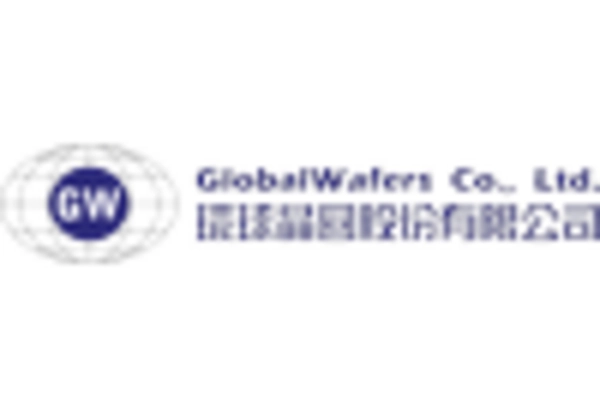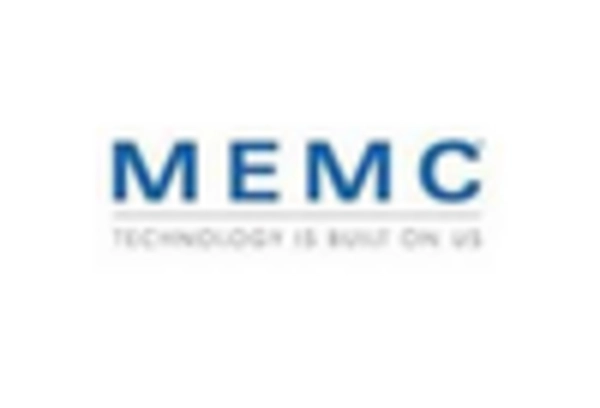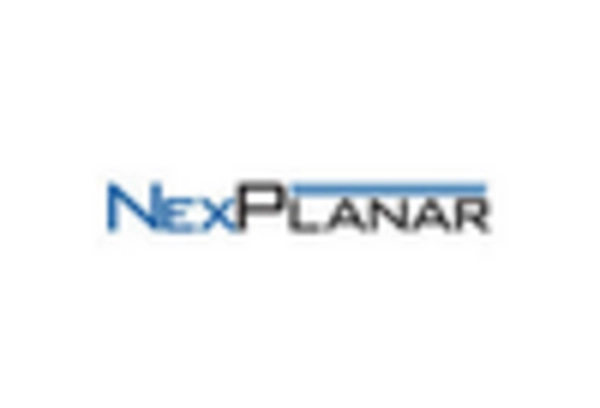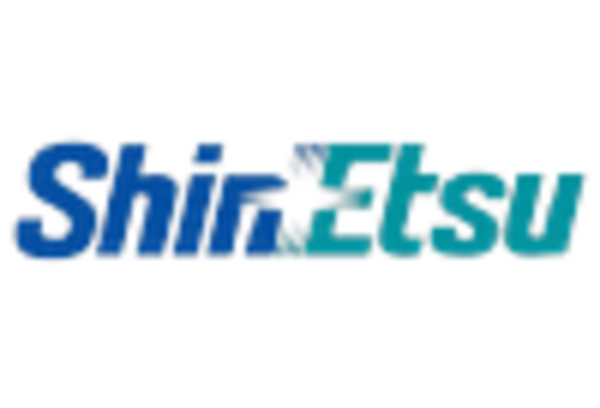Rising Demand for Electric Vehicles
The increasing adoption of electric vehicles (EVs) in the US is driving the silicon insulator market. As automakers transition to electric powertrains, the need for efficient thermal management systems becomes paramount. Silicon insulators play a crucial role in enhancing the performance and safety of EV batteries. The market for EVs is projected to grow at a CAGR of approximately 25% through 2030, which suggests a corresponding rise in demand for silicon insulators. This trend indicates that manufacturers are likely to invest in advanced materials to meet the evolving requirements of the automotive sector, thereby bolstering the silicon insulator market.
Increased Focus on Energy Efficiency
The growing emphasis on energy efficiency in various sectors is positively influencing the silicon insulator market. Industries are seeking ways to reduce energy consumption and improve operational efficiency, which often involves the integration of advanced insulation materials. Silicon insulators are recognized for their ability to minimize energy loss in electrical systems, making them a preferred choice for manufacturers. The US government has implemented various initiatives aimed at promoting energy-efficient technologies, which may further drive the demand for silicon insulators. This trend suggests a favorable environment for growth within the silicon insulator market.
Expansion of Renewable Energy Sources
The shift towards renewable energy sources, such as solar and wind, is significantly impacting the silicon insulator market. As the US aims to increase its renewable energy capacity, the demand for efficient power conversion systems rises. Silicon insulators are essential in photovoltaic systems and wind turbines, where they help manage electrical insulation and thermal stability. The renewable energy sector is expected to grow by over 50% by 2030, which may lead to a substantial increase in the utilization of silicon insulators. This growth indicates a robust opportunity for manufacturers to innovate and expand their product offerings in the silicon insulator market.
Advancements in Semiconductor Technology
The silicon insulator market is experiencing growth due to advancements in semiconductor technology. As the demand for high-performance electronic devices escalates, manufacturers are increasingly utilizing silicon insulators to enhance device efficiency and reliability. The semiconductor industry in the US is projected to reach a market value of $500 billion by 2026, indicating a strong correlation with the silicon insulator market. These advancements allow for the development of smaller, more efficient devices, which could lead to increased adoption of silicon insulators in various applications, including consumer electronics and telecommunications.
Regulatory Support for High-Performance Materials
Regulatory frameworks in the US are increasingly supporting the use of high-performance materials, including silicon insulators. These regulations often focus on enhancing safety standards and improving energy efficiency across various industries. As companies strive to comply with these regulations, the demand for silicon insulators is likely to rise. The market is expected to benefit from incentives and funding aimed at promoting the adoption of advanced materials. This regulatory support may create a conducive environment for innovation and expansion in the silicon insulator market, as manufacturers seek to align their products with evolving standards.














Leave a Comment